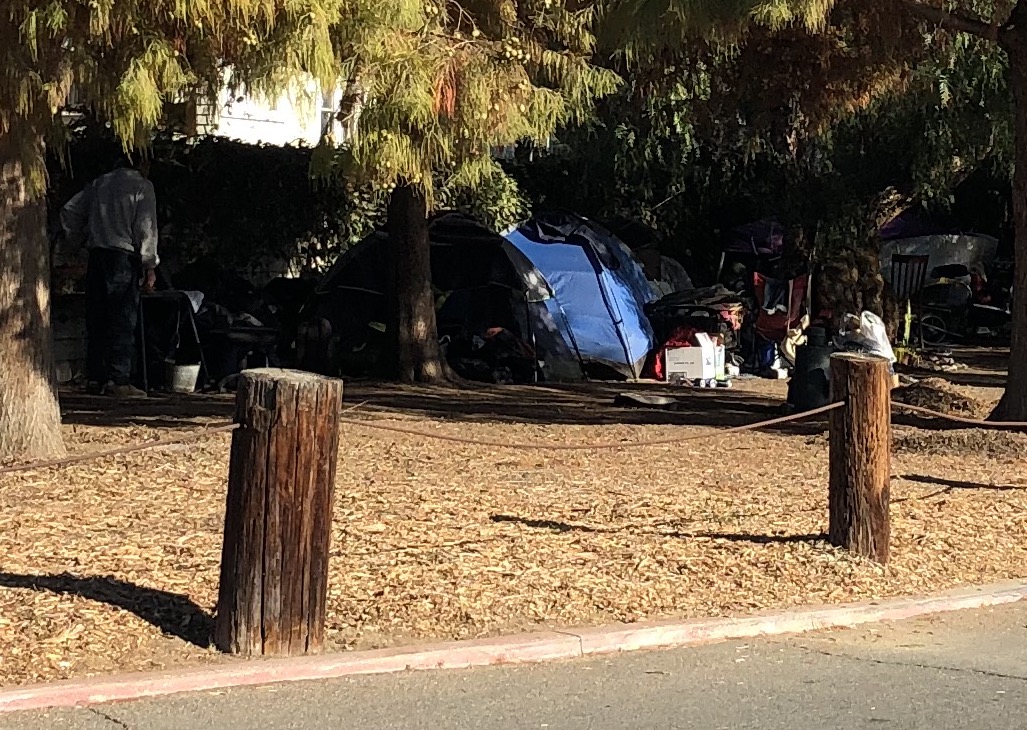Housing First to End Homelessness
Punitive Ordinances Are Not the Solution

The “clean-up” of the Pershing Park homeless encampment began at 9 a.m. on Friday, March 12. The City of Santa Barbara had posted signs warning the encampment residents to clear out within 72 hours. At this point, police officers and sanitation workers arrived and ordered the campers to take down their tents, pack up their belongings, and leave. The police told them, “Go anywhere, except back into the park.”
Observers watched as intimidated campers gathered up whatever personal belongings they could carry. Other frightened residents stood around with confused looks on their faces, not knowing what to do or where to go. A woman began to scream as police and sanitation workers started taking down tents and picking up unattended property to haul to the dump.
By the afternoon, many of the campers had left, while those who remained sat on nearby curbs or paced around in shock. At the end of that day, the tent encampment and its residents were gone.
The city has dedicated $50,000 in funding toward encampment “cleanups.” Even before the raid on the Pershing Park homeless encampment, the city had locked the park’s public restroom and access to clean drinking water.
According to the Centers for Disease Control and Prevention, the breakup of homeless encampments during a pandemic creates unnecessary risks to the health and safety of the community at large and the people who are displaced. The Pershing Park operation forced the campers back onto the streets, potentially exposing themselves and others to COVID.
The city has passed ordinances making it a crime to camp and sleep in parks. It has removed public benches on State Street to deter the homeless from sitting or sleeping on them. The city continues to pass punitive ordinances targeting the homeless. A new ordinance bans oversized recreational vehicles, making it unlawful for RV dwellers to park on any streets in Santa Barbara. This ordinance is now being challenged in the Santa Barbara Superior Court by the Committee for Social Justice.
The most recent Santa Barbara Grand Jury Report describes homelessness as a “human crisis,” adding, “Shamefully, Santa Barbara County has one of the highest rates of homeless school-age children and youth in the state.” After decades of harassment and criminalization, the number of homeless people in the City of Santa Barbara grew to 914 in the 2020 point-in-time count.
Santa Barbara’s unhoused residents have come to expect little or nothing from the city, except broken promises. The Grand Jury concludes that the City Council “needs a change in vision.”
“Housing First” has proven to be the most effective model for ending homelessness. It is time for the City of Santa Barbara to act and implement a Housing First plan.
The authors are members of the Committee for Social Justice Jaan Landheer, former outreach worker, Russell Brown, attorney at law, Robert Landheer, attorney at law; and Joseph Biko Doherty, attorney at law, People’s Justice Project.
[Updated March 25, 2021] At the authors’ request, this version of the op-ed was posted.



